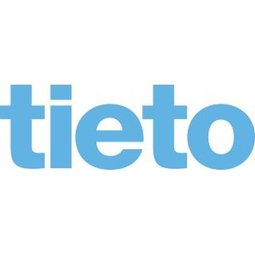下载PDF
AI Revolutionizes Diagnostics of Rare Diseases: A Case Study on Helsinki University Hospital

技术
- 分析与建模 - 机器学习
- 传感器 - 温度传感器
适用行业
- 教育
- 医疗保健和医院
适用功能
- 产品研发
用例
- 临床图像分析
- 根因分析与诊断
服务
- 数据科学服务
- 系统集成
挑战
建立一个经过认证的可信研究环境,该环境符合欧盟通用数据保护条例 (GDPR) 和关于二次使用国家社会和健康数据的 Findata 立法。通过具有最新分析功能的现代、高安全性数字环境加速医学研究。
客户
赫尔辛基大学医院 (HUS)
关于客户
赫尔辛基大学医院 (HUS) 和 Tietoevry 共同开发了数据湖服务,可在医疗保健领域开发先进的治疗方法和优化护理路径,同时加速 HUS 的世界级医学研究。
Rare Diseases eCare for Me 项目利用了 HUS 的数据湖服务及其新的 HUS Acamedic 研究环境。该项目是 CleverHealth Network 生态系统的一部分,现实世界的数据和机器学习推动了人工智能解决方案的开发,该解决方案可用于为罕见病患者提供更有效和更快的治疗。该项目得到了芬兰商业协会的资助。
解决方案
数据湖服务及其 HUS Acamedic 分析工作区为医生和研究人员提供了访问大量数据、综合分析工具和最新 AI 技术的途径。 eCare for Me 项目使罕见病患者能够更快地获得有效的护理,这对患者的健康和福祉产生了重大的积极影响,但通过减少诊断服务和无效治疗的使用显着降低了公共医疗保健成本。
运营影响
数量效益
相关案例.

Case Study
Hospital Inventory Management
The hospital supply chain team is responsible for ensuring that the right medical supplies are readily available to clinicians when and where needed, and to do so in the most efficient manner possible. However, many of the systems and processes in use at the cancer center for supply chain management were not best suited to support these goals. Barcoding technology, a commonly used method for inventory management of medical supplies, is labor intensive, time consuming, does not provide real-time visibility into inventory levels and can be prone to error. Consequently, the lack of accurate and real-time visibility into inventory levels across multiple supply rooms in multiple hospital facilities creates additional inefficiency in the system causing over-ordering, hoarding, and wasted supplies. Other sources of waste and cost were also identified as candidates for improvement. Existing systems and processes did not provide adequate security for high-cost inventory within the hospital, which was another driver of cost. A lack of visibility into expiration dates for supplies resulted in supplies being wasted due to past expiry dates. Storage of supplies was also a key consideration given the location of the cancer center’s facilities in a dense urban setting, where space is always at a premium. In order to address the challenges outlined above, the hospital sought a solution that would provide real-time inventory information with high levels of accuracy, reduce the level of manual effort required and enable data driven decision making to ensure that the right supplies were readily available to clinicians in the right location at the right time.

Case Study
Gas Pipeline Monitoring System for Hospitals
This system integrator focuses on providing centralized gas pipeline monitoring systems for hospitals. The service they provide makes it possible for hospitals to reduce both maintenance and labor costs. Since hospitals may not have an existing network suitable for this type of system, GPRS communication provides an easy and ready-to-use solution for remote, distributed monitoring systems System Requirements - GPRS communication - Seamless connection with SCADA software - Simple, front-end control capability - Expandable I/O channels - Combine AI, DI, and DO channels

Case Study
Driving Digital Transformations for Vitro Diagnostic Medical Devices
Diagnostic devices play a vital role in helping to improve healthcare delivery. In fact, an estimated 60 percent of the world’s medical decisions are made with support from in vitrodiagnostics (IVD) solutions, such as those provided by Roche Diagnostics, an industry leader. As the demand for medical diagnostic services grows rapidly in hospitals and clinics across China, so does the market for IVD solutions. In addition, the typically high cost of these diagnostic devices means that comprehensive post-sales services are needed. Wanteed to improve three portions of thr IVD:1. Remotely monitor and manage IVD devices as fixed assets.2. Optimizing device availability with predictive maintenance.3. Recommending the best IVD solution for a customer’s needs.

Case Study
HaemoCloud Global Blood Management System
1) Deliver a connected digital product system to protect and increase the differentiated value of Haemonetics blood and plasma solutions. 2) Improve patient outcomes by increasing the efficiency of blood supply flows. 3) Navigate and satisfy a complex web of global regulatory compliance requirements. 4) Reduce costly and labor-intensive maintenance procedures.

Case Study
Harnessing real-time data to give a holistic picture of patient health
Every day, vast quantities of data are collected about patients as they pass through health service organizations—from operational data such as treatment history and medications to physiological data captured by medical devices. The insights hidden within this treasure trove of data can be used to support more personalized treatments, more accurate diagnosis and more advanced preparative care. But since the information is generated faster than most organizations can consume it, unlocking the power of this big data can be a struggle. This type of predictive approach not only improves patient care—it also helps to reduce costs, because in the healthcare industry, prevention is almost always more cost-effective than treatment. However, collecting, analyzing and presenting these data-streams in a way that clinicians can easily understand can pose a significant technical challenge.






